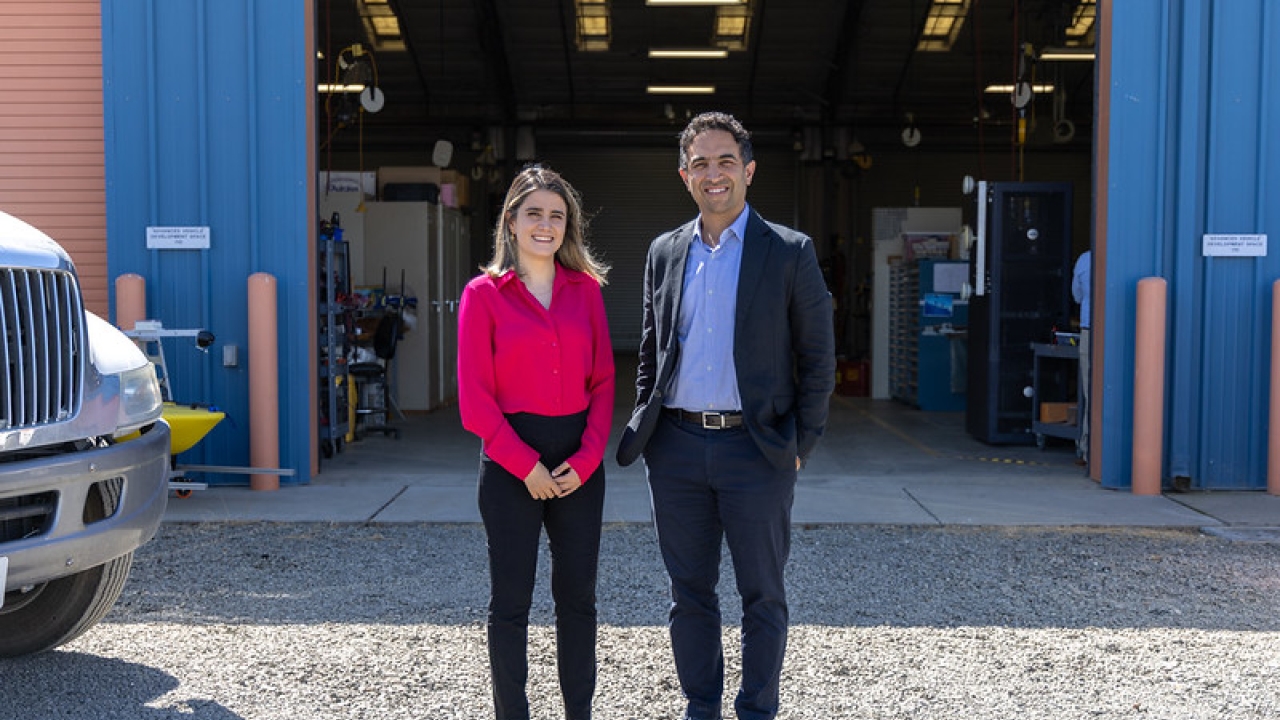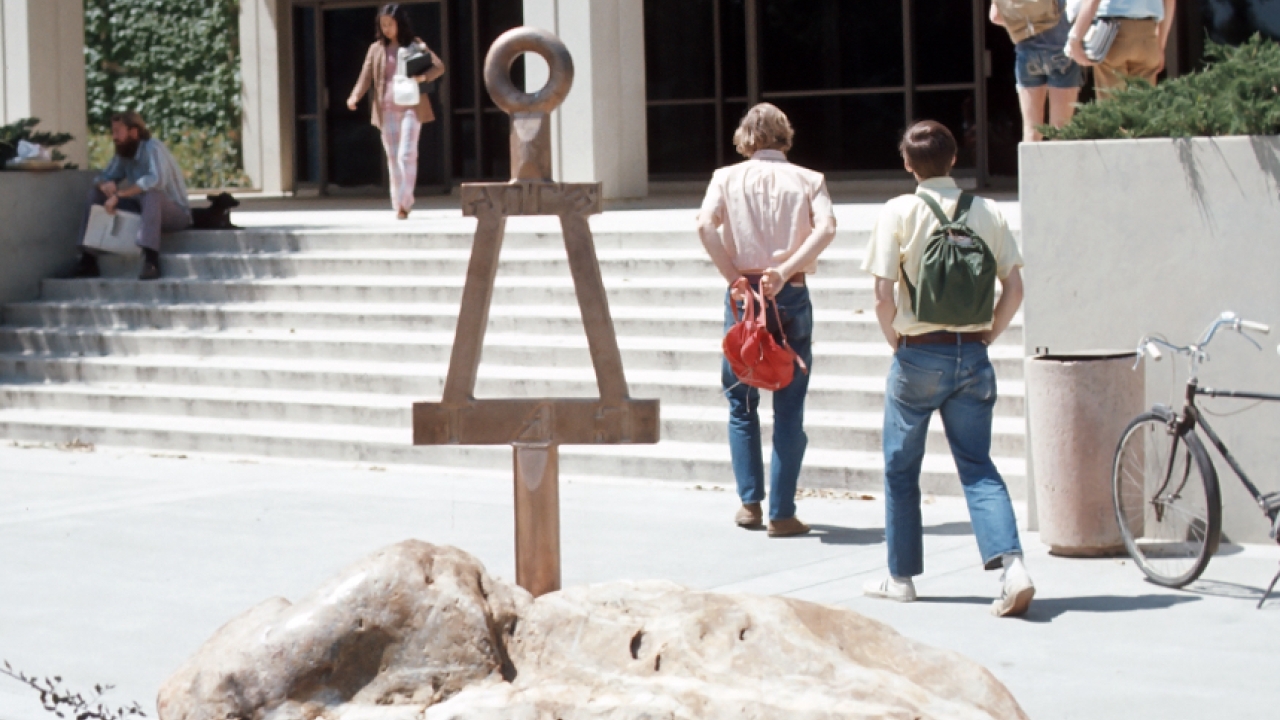
A Key to the College of Engineering's Past
The Bent Monument stands as tribute to the history and continued legacy of ingenuity, collaboration and literal groundbreaking work of UC Davis engineers
For the uninitiated, the Bent Monument may sound like the title of a modernist art piece. Even more, with its unusual combination of shapes aligned like some strange tower fit for science fiction, the Bent Monument in front of Bainer Hall at the University of California, Davis, could be mistaken as being at home amongst campus pieces like Robert Arneson's Eggheads and Tio Giambruni's industrial worm-like sculpture, "Bum, Bum, You've Been Here Before."
Its original design, however, was less artistic and more functional: It started life as a watch key, designed as a pendant and based on the shape of a railroad trestle, that could wind a watch in the late 18th century. The Bent is the longstanding symbol of Tau Beta Pi, the second-oldest honor society in the U.S. and the first for engineers.
The insignia unifies members as a representation of the honor society's mission, as declared by the plaque at the foot of UC Davis' monument to it: "to mark in a fitting manner those students who have achieved outstanding scholarship in engineering."
Yet, the Bent Monument in front of Bainer Hall's east entrance is more than a mark for the honor society. Curiously enough, it plays true to its form as a tool to wind time. It's a key to UC Davis' past.
A Bent for Breaking Ground
Fifty years ago, in the spring quarter of 1973, 21-year-old electrical engineering and chemistry double major David Cook found himself, with a shovel in hand, digging a hole in front of Bainer Hall between classes.
Cook, then a senior, had recently become the president of Tau Beta Pi and resolved to install the Bent Monument for the UC Davis chapter. That's why he was digging.
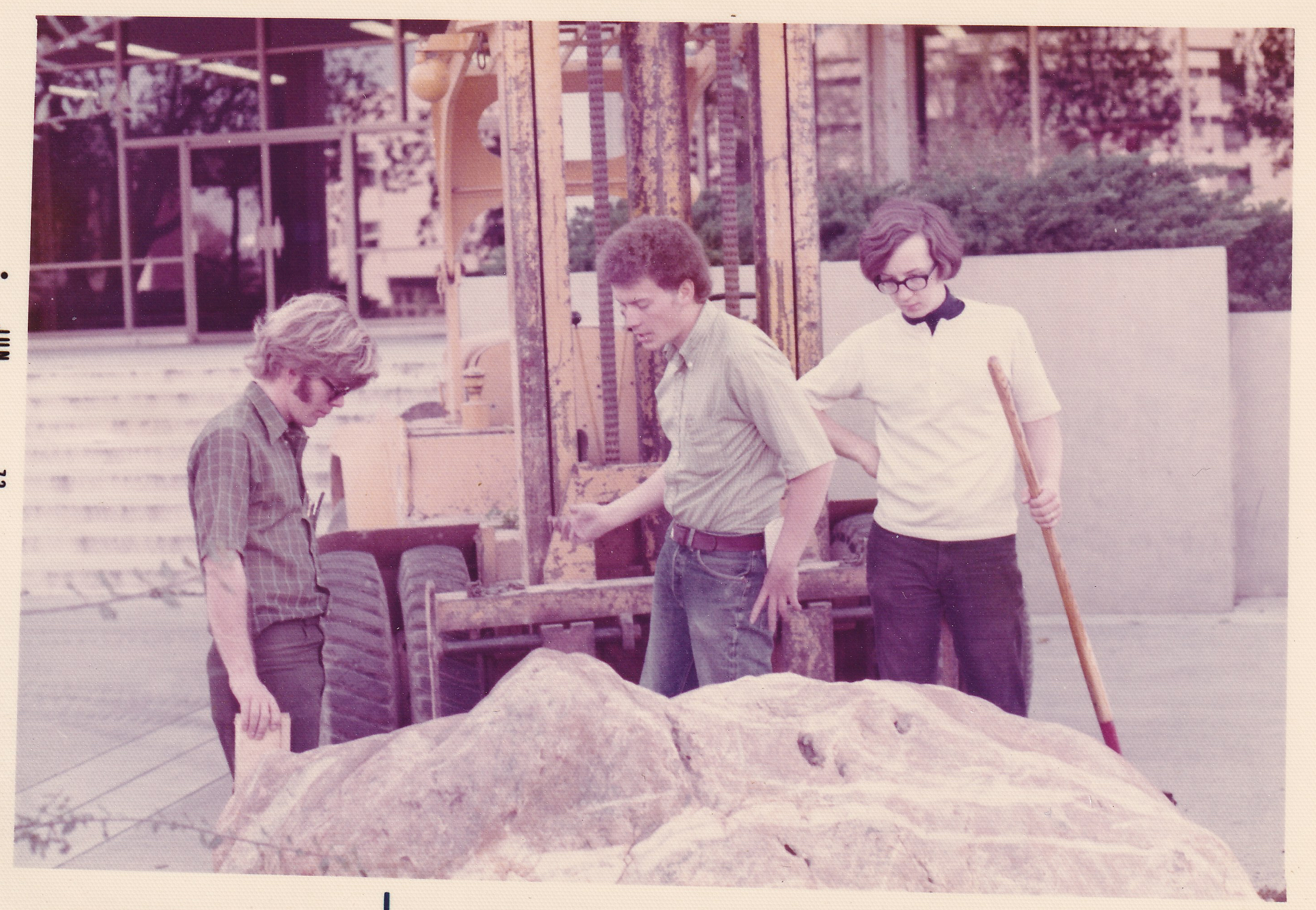
Cook had received approval to break ground in front of Bainer Hall by Dean John D. Kemper, the namesake of Kemper Hall, and had found the time, despite his busy senior schedule, to lead the digging of the hole with help from fellow Tau Beta Pi chapter officers Chris Mayer and Darrel Wilson. But Cook had other problems to contend with.
He needed to figure out how to transport the boulder he had found at a landscaping company in Folsom, which would be the Bent's mount. Worse yet, he needed to know how he would install the rock, which was thousands of pounds, into the hole he had dug.
Here, it's important to note that Cook is the type of person who sticks with an idea until the end, no matter what. Say, his drive to major in chemistry on top of his electrical engineering degree for no other reason than he enjoyed the coursework or his commitment to finishing an entire year of college-level courses during his senior year of high school.
So, rather than back down and abandon the idea of the Bent Monument, he reached out for help. He connected with Dean Kemper, who quickly arranged for him to use one of the university's flatbed trucks to transport the boulder to campus, and a forklift to move it from the truck to the hole (something, truly, that could only have happened in the 1970s).
Equipped with these tools, Cook went to pick up the rock from Folsom, where, happily, the company that was donating the boulder agreed to load it on the truck for free. However, Cook was about to face his biggest dilemma yet.
The Ingenuity of an Aggie Engineer
When he arrived at Bainer Hall with the rock, no one could move it. Not Cook, Mayer or Wilson.
"The large forklift was suitable to carry the rock all by itself, but it wasn't suitable to get the rock off the truck bed," Cook said, "because its prongs weren't long enough to go all the way under [from the side of the truck]."
Of course, the solution was another much smaller utility forklift they found. With both forklifts working in unison, they could lift the rock. Sort of.
"Darrell and Chris each drove a forklift in from opposite sides and lifted the boulder off of the truck bed while I drove the truck out from under," Cook said. "[But] the boulder was so heavy that when one forklift would lower its forks, the back of the other lifted off the ground and threatened to fall forward."
While initially a cause for alarm, it became a method. They experimented with the forklifts until they figured out a way, with measured increments, of moving one forklift down and then the other. Inch by inch, minute by minute, the rock came closer and closer to the ground in the industrial yard behind Bainer Hall.
"All of us were roughly 21, and here we were working heavy machinery and large trucks," Cook said. "What a privilege to be trusted with the equipment and what fun we had in using the larger forklift to move the boulder around to the front of Bainer."
Once they had it in the hole, the three men threw soil around the boulder, covering it about halfway to secure it in place. Then they left, with Cook going home for the weekend to wonder how he would drill a hole into the rock. He needed to fit the Bent into it somehow.
An 'Invisible Hand' Revealing a Community at Large
When Cook returned home from Modesto, he found the problem had been solved for him. Dean Kemper had a hole drilled into the rock.
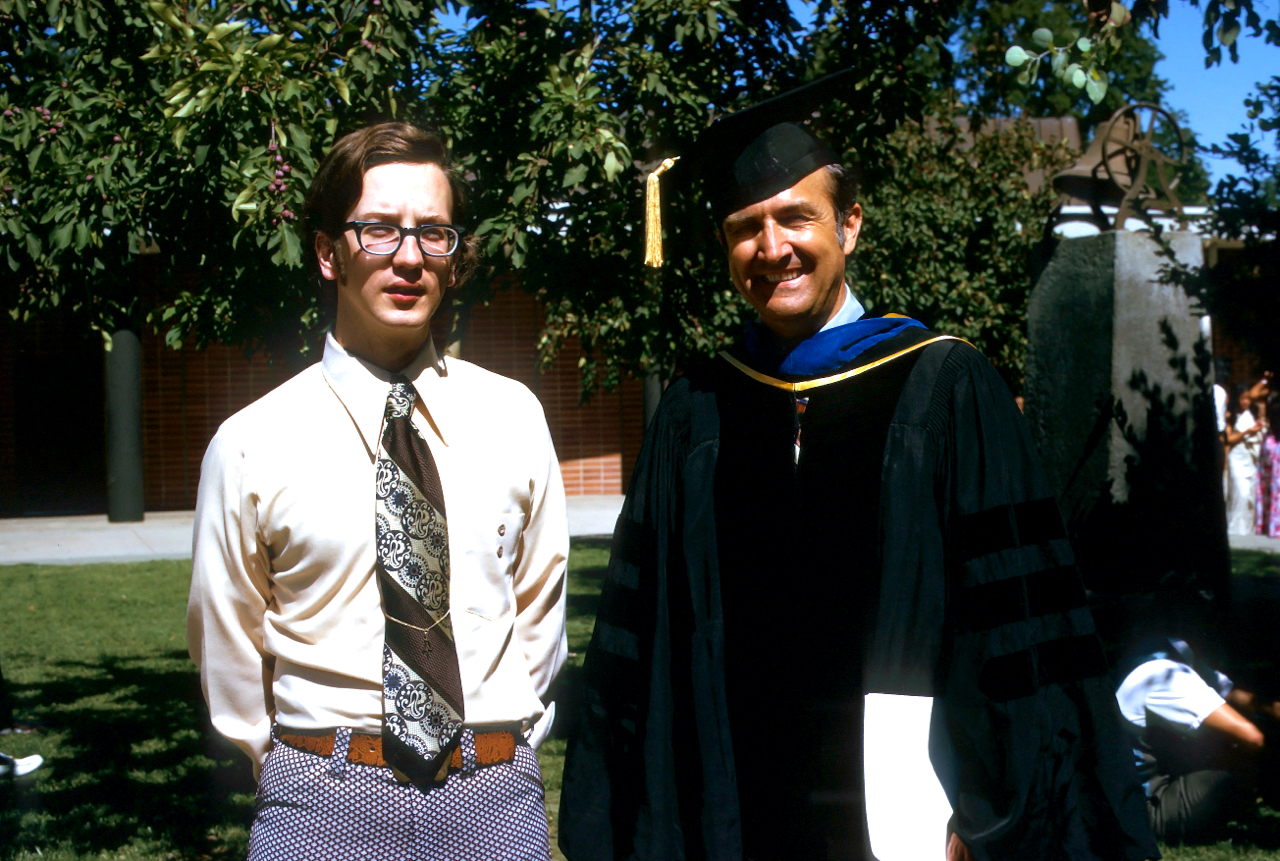
"It would have been up to us three students, and we were at a loss at that point," Cook said. "I mean, we got the thing into the ground, but we were coming into a finals week of our senior year. We had reached the end of our ability, and he carried it across the finish line for us."
The next day, facilities cemented the Bent into the hole. They also provided landscaping services for the space around the Bent Monument, artfully placing plants around it to make it presentable for Picnic Day.
"I think Dean Kemper had an invisible hand that we probably didn't appreciate at the time," Cook said. "He must have had to get permission from the chancellor to make an installation possible and then also to arrange for landscaping."
Kemper's actions and Cook's words begin to reveal that the Bent Monument was more than the pursuit of a one-time president of Tau Beta Pi. It's a story of ingenuity, of helping students to pursue their dreams and of the collaborative spirit that empowers groundbreaking work in the College of Engineering, often from the dean down. That story continues to this day.
A Modern Take
Cross-collaboration and interconnectedness: Those are keywords to Tate Chatfield's vision as president for UC Davis' Tau Beta Pi chapter for the 2023-2024 academic year.

Chatfield, a biomedical engineering senior, wants to make Davis the center for collaboration between all Northern California chapters. She's already met with the Tau Beta Pi president at California State University, Sacramento, to establish a robust communication channel between the causeway chapters. She hopes to meet with others in the region soon.
Other ideas look inward. Chatfield wants to host more community events, such as bowling with engineering professors at the Memorial Union, and double down on those longstanding traditions that bring members together (think: a bimonthly meetup for trivia night at Woodstock's Pizza in Downtown Davis).
Another is the chapter's focus on tutoring undergrads in core classes like Engineering 6 and Engineering 17, whether they're chapter members or not — a keystone service in the College of Engineering community, Chatfield notes. Funnily enough, it has ties to the Bent Monument: The program began with Dean Kemper in the 1972 to 1973 academic year, with Cook serving as one of the initial peer counselors.
Chatfield says her life was changed by the tutoring she received as an engineering freshman. She met her mentor Shannon Lamb '22, a fellow biomedical engineering student and the president of Tau Beta Pi from 2020 to 2022, who helped Chatfield with more than her assignments.
"She really inspired me to pursue academic excellence in engineering," she said. "That's kind of why I wanted to join and then become president of Tau Beta Pi."
The Power of Community
Chatfield marks the third woman in a row to serve as president of Tau Beta Pi, with her mentor starting the tradition. This developing legacy of women leadership and a community of women in the chapter is "pretty awesome," said Chatfield.
"Engineering has historically been male-dominated. But the past few presidents before me were women and also in biomedical engineering. So, to me, I'm continuing a legacy at this point. Seeing so many women involved really excites me."
This year, leadership in the club is dominated by women, even at the faculty level. Department Chair and Professor of Materials Science and Engineering Yayoi Takamura and Professor of Biomedical Engineering Angelique Louie help oversee and provide mentorship to the chapter.
"I think that it's just really cool to have all of this woman power here [at UC Davis]," Chatfield said. "I have a lot of hope for the future of engineering and with Tau Beta Pi."

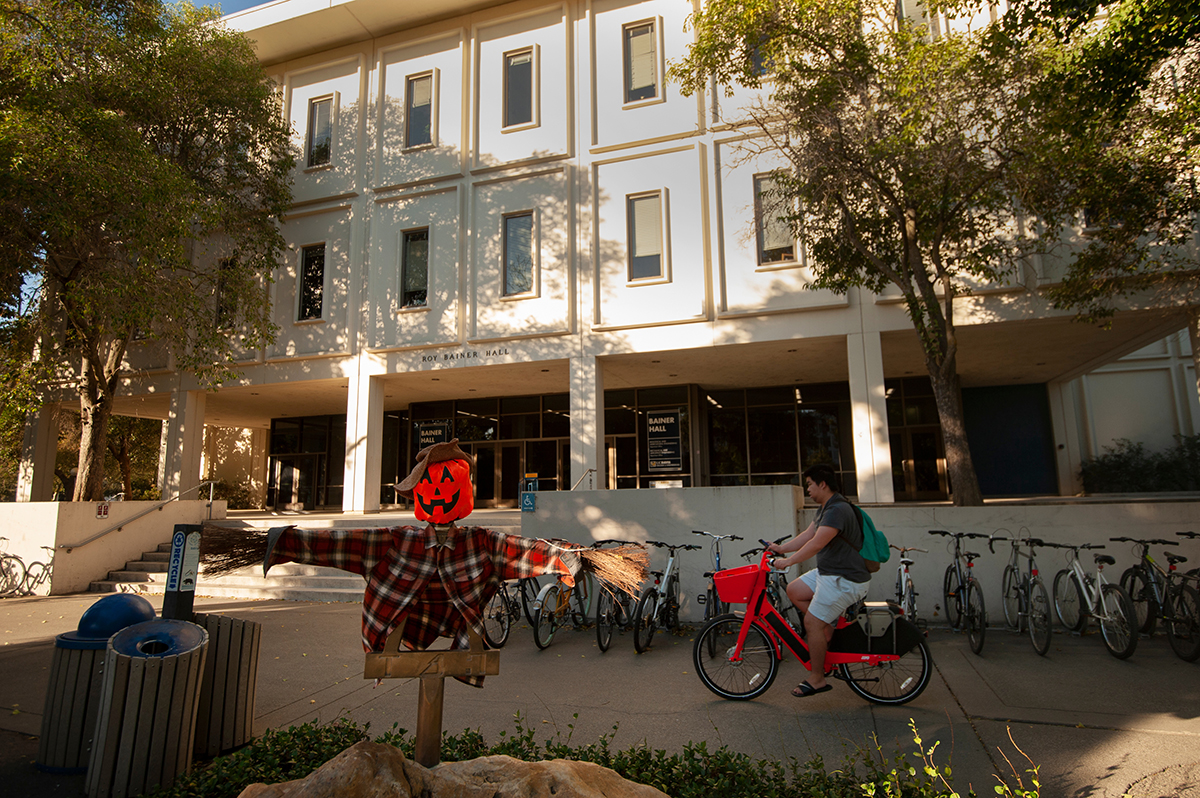
A Forgotten History but a Legacy Continued
When asked about the story of how UC Davis' Bent Monument came to be, Chatfield said she had no idea. The history was lost and the statue has become, instead, a popular photo spot for members.
But Chatfield smiled and laughed after hearing how Cook connected with college leadership to use two forklifts to lower a rock. She said it sounded like a "very Davis" thing.
That's just it. The passion and collaborative spirit shared between Cook and Chatfield, at the heart of all of it, is something very Davis.
It's an ineffable quality to name in a single word, but it's one surely defined by a bent for breaking ground, both literally and figuratively, and an openness to collaborate and help each other make our community the best it can be.
Tellingly, when Cook was told that a woman is the current president of Tau Beta Pi, his whole face lit up.
"You know, it's overdue," he said. "There were very few women engineers when I was a student." He paused then, his mind seemingly reflecting on Tau Beta Pi, his time at UC Davis, and, finally, the Bent Monument.
"Now to see it still there, 50 years later, is great. That's probably one of my most meaningful achievements, to have spearheaded that and to see it's still there and that it's meaningful to students. A lot of things go on campus, and they end up being a little pedestal with a plaque somewhere that's grown over with grass, forgotten."
It's not forgotten. It's a symbol of Aggie Engineers' ability to identify and solve problems, from a symbolic monument to the world's most pressing challenges. To fifty years of the Bent Monument and beyond.



